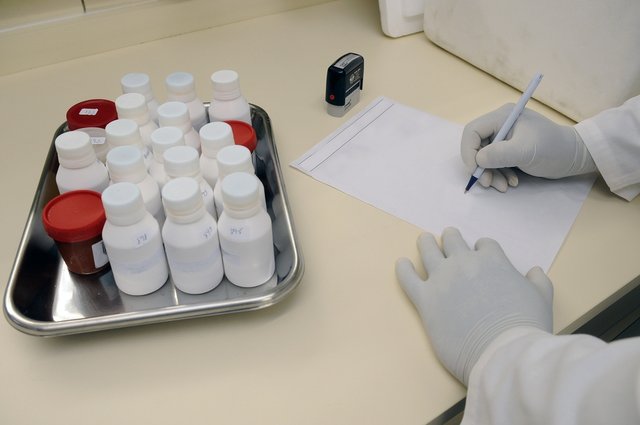Image Link: https://www.pexels.com/photo/person-in-white-hand-gloves-writing-on-white-paper-207601/

All laboratory courses require laboratory reports, which are typically a significant percentage of a student's mark. If an instructor provides an outline for drafting a laboratory report, learners should follow it. Some teachers will ask for a laboratory report to be included in the laboratory notebook, while others will ask for a separate report. Here are five suggestions for learners on how to write a laboratory report.
Draft an Introduction
The subject under investigation and the associated theory are discussed in the introduction. It should generally be 4-5 sentences long. In a small paragraph, the essential objective is to offer the reader a sense of what one will do. Before commencing one's introduction, it is always a great idea to read the complete experiment in the manual.
Flowchart
This section should not exceed one page. A great flowchart must provide the reader with an initial sense of what needs to be done in the laboratory in a more simplified format. I used EduBirdie, whereby assistants write my lab report for me, and they developed a flowchart that served as the experiment's road map. When creating a flowchart, there are two essential phases to follow. To begin, the student should attentively read the experimental technique. Second, they should restate the process in a flowchart format; it should be concise and contain all phases straightforwardly and understandably.
Data Collection
Always use a pen to write. Because of the carbon paper beneath it, a learner cannot erase anything. White-out should not be used. They should always enter data into their laboratory report directly. It is more important to make sure that all of the data is recorded right away if they forget what they meant to say later or fail to write other information into their notebook. Never scratch something out entirely since no one is perfect. They may find out later that they were correct all along. Also, if one makes a mistake, it is good to keep account of it so that they (or someone else trying to replicate the experiment) can remember not to repeat it.
Calculations
It is always a great idea to jot down all of the formulas one uses in their computations. Also, the student should display all of their work and make sure that they include the units while completing calculations, rather than dropping them halfway through. It is a handy tool because if their result has the incorrect units, they made a mistake somewhere along the road.
Conclusions
The conclusion is similar to the introduction; however, instead of summarizing what one will do, it summarizes what one has already done. The rationale for adding a conclusion is that the laboratory report may be lengthy, and the reader may not recall all of the key points made. It also allows the student the chance to address what went wrong or maybe improved, as well as suggest new experiments. It must be concise and to the point.
Conclusion
All laboratory studies, including Physics, Chemistry, Biology, and Natural Science, require laboratory reports, which are typically a significant component of one's mark. A laboratory report is an opportunity to demonstrate what was done in an experiment, learned, and what the results meant. It is critical to pay close attention to the standards and guidelines when producing a report because they can differ substantially.